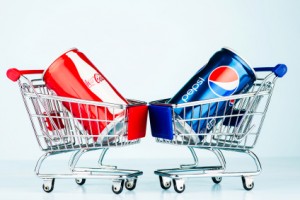
Customer Loyalty: 3 Ways to Create a Cult-Like Following
Have you ever been a member of a cult? Don’t be so quick to say “no way Jose!” – It seems like a crazy notion, but hear us out. The term, “cult” may have a negative connotation (depending on who you are), but developing a ‘cult-like following’, especially as a brand, seems anything but insane. Are you a die-hard Apple product or Mac user? Do you refuse to fly with anyone but Virgin America? Do you only drink Coke vs. Pepsi? These particular companies have established such insane amounts of customer loyalty; they’ve created cult members out of many of us.
So how do we get people hopelessly devoted to our own brands and businesses? At the New Media Expo in Las Vegas, Dino Dogan, founder of Triberr, spoke about brands with cult-like followings. According to Dogan, the only difference between establishing a cult and customer loyalty, is the intention. Here are his three insane loyalty-creating principles:
1. Create Polarity
Polarity is the concept of us vs. them, good vs. evil, yin vs. yang. Dogan explains that putting your foot down, causing some controversy, and taking a stand doesn’t always come easy, but it’s important in creating customer loyalty. “It requires balls to declare what you stand for,” Dogan says, “So be comfortable with making enemies.” An example of polarity amongst brands? The Pepsi Challenge. Remember those commercials in which people did blind taste tests of Pepsi vs. Coke? This was PepsiCo creating polarity by taking a stance, declaring war in a battle of the brands, and gave Coca-Cola a run for its money.
Dogan also pointed out the witty, polarity-driven ads by Apple: ‘Get a Mac‘ aka “I’m a Mac, I’m a PC.” The ads depicted Mac (played by Justin Long) as young, hip and knowledgeable where as PC (played by John Hodgman) was obviously older, complicated, dowdy, and outdated. The ads forced customers to take a stance: Do you want to be smart, young, hip, and sleek, or simply a square? The power of polarity!
2. Create an Avatar
Now we’re not talking about transposing yourself into a giant, blue, genetically engineered body of the Na’vi – If you’ve never seen the movie, “Avatar,” that simply won’t make sense. But what Dogan is saying, is to visualize your customer, be culturally relevant and significant, and build your brand around them. Who is your customer? What’s his/her age, gender, demographic, occupation, marital status, desires, needs, etc. Understanding your audience is the key to gaining their loyalty. Want to take it a step further? Be your customer. Dogan explains that being your own customer is “absolutely the best way to understand the mind of your customer. Everything else is sub-par.”
Pinterest is an excellent example of a brand banking on its customer avatar. According to Dogan, Pinterest was developed with a specific audience in mind: Female, 25-35+, from Middle America, makes 50K+ a year, etc. Pinterest’s customer profiling certainly paid off, as it’s the fastest growing social network in the world.
 3. Create Status
3. Create Status
What do people desire more than owning ‘stuff”? If you said, “love,” that’s sweet, but the answer is actually: Status. Dogan explains that “we’re status seeking animals,” and the urge for maintaining a high profile status is strong, whether we’re aware of it or not. Dogan’s first example of a brand establishing status: Girl Scouts. What do sweet, innocent little Girl Scouts have to do with status? Look at all their badges! When I was a Girl Scout back in elementary school, I did just about anything and everything to gain one more precious, embroidered badge to display on my green sash. Having a plethora of “flare” is a big deal, and the more I obtained, the higher the status in my thin mint-slinging world – It works!
Dogan pointed out that airlines are the ultimate status-creating pros. Skymiles, Frequent Flyer Program, Rapid Rewards – You choose devotion towards a particular airline, and the flying world is your oyster. Quick security check? You betcha! Priority boarding? Yes please! VIP treatment? You got it! Members belonging to an airline’s loyalty program get major benefits, but the biggest one allows them show off their VIP status by smugly strolling past a long line of non-member minions for priority boarding.
So now that you’ve gained insight into brands’ cult-creating ways, do you agree or disagree with Dogan’s insane customer loyalty principles? Share your thoughts!
© 2013, Contributing Author. All rights reserved.





Nice article, Colleen. When companies combine some solid marketing strategies like these with some powerful customer experience behaviors to back them up, they can really make the needle move on customer and brand loyalty.
Thanks Dino! I was there, front and center – Excellent session (obviously!).
Great write up, Colleen.
Were you at the live show or did you listen to the recorded version on NMX?